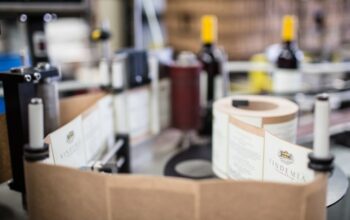There are a few things you should know about temperature-sensing pieces of equipment. These include the type of sensors available, how they work, and what benefits they can provide.
Analog
Temperature sensing equipment is used in a variety of applications. Some typical applications include geotechnical monitoring and thermal imaging. These instruments use non-contact techniques to provide reliable readings. They are also commonly used in hazardous environments where exposure to extreme temperatures is dangerous. For this reason, you need to be careful when selecting thermal products such as temperature-sensing equipment. This includes choosing the proper power supply and handling the devices carefully. Selecting the correct sensor type will help reduce the risk of device failure and improve battery life. There are three main types of temperature-sensing equipment: analog, semiconductor, and digital. Each is designed for a specific application. Typically, these sensors offer high accuracy and reasonable costs. A semiconductor sensor is a microchip with integrated circuitry. It uses diodes and transistors to perform the calculations required for temperature measurements. The temperature measurement is converted to a digital format inside the IC. Unlike analog devices, this method offers an accurate, consistent readout.
Digital
Digital temperature sensing equipment is used in various industries. These sensors can be of different types. Some of these include thermocouples, thermistors, and semiconductors. Each class has a particular advantage or disadvantage. Thermocouples are the most widespread. They are known for their accuracy and speed of response to changes in temperature. In addition to this, they are inexpensive. Other advantages of these devices include a wide temperature range, ease of use, and flexibility. Digital temperature sensing equipment sends a low-voltage pulse through a conductive metal. This translates into an electrical signal that is transmitted to a readout unit.
Another essential feature of these devices is the capability to display temperature fluctuations. This is usually accomplished with a simple lookup table. If the battery is weak, the temperature readings will be less accurate.
Thermocouple
A thermocouple is an instrument for temperature measurement. It can be made from various materials and has a wide temperature range. Thermocouples are commonly used for industrial measurements. They are mainly composed of two wires, one containing positive and the other incorporating harmful elements. An electric current passes through the junctions and generates a voltage. This voltage is dependent on the temperature difference.
Thermocouples are usually made of copper or nickel. These alloys can be coated with epoxy and glass. For high-temperature applications, heavy gauge wire is used. In addition to its measurement function, a thermocouple also serves as a reference. As the temperature changes, the voltage generated at the junctions increases. To compensate for this, a method called cold-junction compensation is used. A thermistor is another type of sensor with a similar principle to a thermocouple. It is a thermal conductor that produces a voltage depending on the temperature.
Infrared
IR temperature sensors are a valuable tool for many applications. They are often used in manufacturing processes, quality control, and maintenance. But before you start using an infrared sensor, you need to know what it is and how it works. When using an infrared thermometer, keep a few things in mind. First, you should know what temperature range you need. For example, if you want to measure the surface temperature of an object, you need to choose one that can measure temperatures over a wide range. Infrared sensors can also be used to check the temperature of an item without touching it. This is especially useful in troubleshooting situations and can monitor temperatures remotely inside a furnace tube. Another essential factor is emissivity. An object’s emissivity value is too low and can cause inaccurate readings. Many things have a low emissivity value, such as polished metallic surfaces. However, others have a high emissivity value, such as rock and wood.
Bimetallic
Bimetallic temperature sensing equipment is used in a variety of industries. Thermostats, food processing, oil refining, and petrochemical refining are just a few. In addition, they are also widely used in household appliances. They are easy to use, inexpensive and durable. Bimetallic thermometers are one of the oldest and most reliable temperature-measuring instruments. They are also low-cost, non-toxic, and self-energizing. But, they may need to be more accurate in low-temperature measurements. For this reason, they are not recommended for high temperatures. However, they are still widely used in critical process applications. It is essential to follow the proper calibration process to achieve accurate results. The correct method will vary depending on your application. To find the best bimetallic thermometer calibration procedure, you should first determine the type of thermometer you intend to install.




